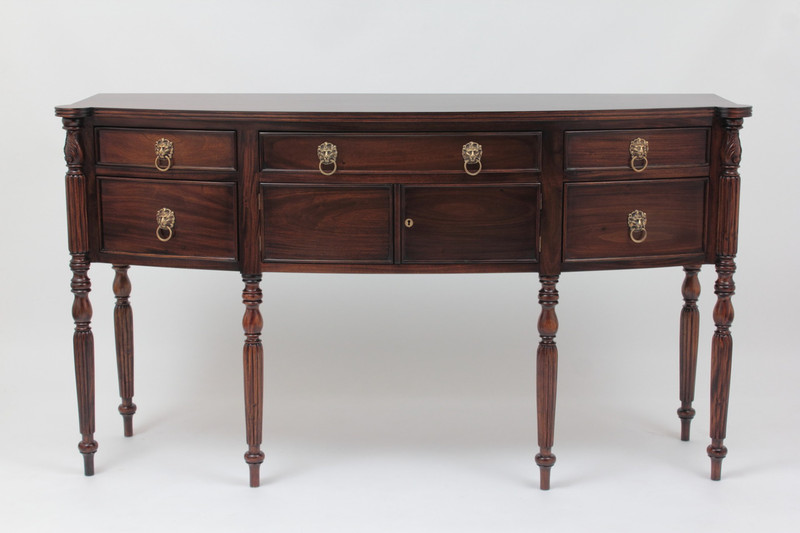Furniture Wood Types
Over the centuries, master craftsmen have relied on a variety of hardwoods to shape the silhouettes and structural foundations of fine furniture. From regional availability to stylistic preferences of the period, the choice of wood was influenced by trade, geography, and evolving tastes. Understanding which woods were favored during specific eras not only enriches your appreciation of antique furniture but also aids in discerning an authentic antique from a reproduction.
However, the identification process is not always straightforward. Surface treatments such as paint, stain, or polish may obscure the wood’s natural characteristics, complicating efforts to determine species. In this guide, we examine the most commonly used antique furniture wood types, highlighting their distinctive qualities, historical context, and typical applications.
Common Woods Used in Antique Furniture
When it comes to antique furniture, the type of wood used can reveal much about a piece’s age, origin, and quality. Certain woods were favored in different eras for their durability, appearance, and workability. Below, we explore some of the most commonly used woods in antique furnishings—each with its own distinct grain, hue, and historical significance.
- Calamander (Coromandel or Golden Ebony)
Native to Southeast Asia and the Pacific region, calamander is a dense and luxurious hardwood often reserved for veneers and banding. Distinguished by its rich brown coloration interwoven with bold black streaks, this wood was especially prized during the Regency period (1795–1837). Due to its rarity, calamander is found predominantly in high-end antique furnishings. - Cherry (Fruitwood)
Sourced from North and South America, American black cherry features warm reddish undertones that deepen over time and with exposure to light. Favored during the Queen Anne and Federal periods, cherry is appreciated for its workability, resistance to warping, and elegant, fine grain, making it ideal for carved details and delicate ornamentation. - Elm
With a naturally interlocked grain and resistance to splitting, elm was a preferred material during the Colonial era (1700–1780). Found in both America and England, elm’s heartwood ranges from light brown to gray. Though classified as a hardwood, its soft texture made it versatile for traditional joinery techniques. - Kingwood (Prince’s Wood)
Exclusively native to Brazil, kingwood is closely related to rosewood and was a hallmark of 17th- and 18th-century luxury furniture. Its coloration—ranging from brown to deep purple with pale or dark streaks—is matched by a straight grain and high natural luster. Its resistance to decay made it an excellent choice for inlays and fine veneers. - Mahogany
One of the most iconic furniture woods, mahogany is native to South America and the West Indies. Its tight grain, dimensional stability, and rich coloration—spanning from light red to deep brown—have cemented its reputation since the Colonial era. Mahogany’s consistent texture made it the wood of choice for both structural elements and intricate carving. - Maple
Maple is a durable, light-colored hardwood native to the eastern United States. Known for its fine, uniform grain, it was frequently used during the Regency and Victorian periods. Variants such as bird’s eye maple, with its distinctive speckled pattern, were particularly valued in bedroom furniture. - Oak
Abundantly available throughout Asia, Europe, and North America, oak is a slow-growing hardwood with a distinct open grain and natural strength. Typically pale in tone, oak darkens with age and polishing. It was frequently used in Georgian furniture (1714–1820) and is prized for its durability and bold grain patterns. - Pine
Comprising over 100 species, pine has long been a utilitarian favorite due to its widespread growth in the Northern Hemisphere. American furniture makers often employed Eastern White Pine, Sugar Pine, and Yellow Pine, whose visible knots and unique grain patterns lend character to rustic and country-style pieces. - Rosewood
Highly valued for its visual depth and aromatic qualities, rosewood was used for both veneers and full pieces. Its bold coloration—from brown to deep red, sometimes nearly black—and wavy grain are instantly recognizable. It is dense and resistant to wear, making it a preferred choice in decorative European furniture. - Satinwood
Imported from India, Sri Lanka, and Southeast Asia, satinwood boasts a luminous yellow tone and silky texture. Often utilized for inlays and decorative panels, it was prevalent during the Georgian and Hepplewhite periods (1780–1810) and saw a revival in the Edwardian era (1901–1911). - Sycamore (Buttonwood)
Native to the southeastern United States and parts of Europe and Asia, sycamore is a fast-growing hardwood with a fine, smooth grain. Its light coloration—ranging from creamy white to reddish brown—made it suitable for musical instruments, trunks, and occasional furniture. - Walnut
A cornerstone of American and European furniture making, walnut is a richly grained hardwood whose color can vary from golden brown to grayish tones. Burr walnut, known for its dramatic swirling grain, was frequently used in veneers. Walnut was prominent in the William and Mary (1690–1730), Queen Anne (1720–1760), and Chippendale (1755–1790) periods.
Timeless Craftsmanship in Every Grain
Familiarity with these traditional wood species offers more than academic insight—it provides a deeper connection to the craftsmanship and context behind every heirloom piece. Whether you're evaluating a vintage chair or selecting a handmade reproduction, understanding the natural materials enhances both the appreciation and care of fine furniture.
We continue this legacy by crafting antique reproduction furniture from premium mahogany and pine, selected for their beauty, integrity, and historical authenticity. Let the story of wood enrich the character of your home. Browse our selection of antique reproductions today.










